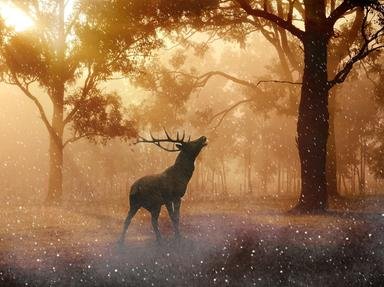Quiz Answer Key and Fun Facts
1. Where might you see an okapi in the wild?
2. What is the okapi's closest living relative?
3. You are trekking through the Ituri Rainforest and come across a herd of ten okapi, all peacefully browsing on leaves. You raise your camera to snap a picture...and realize you are dreaming. How do you know the scene before you isn't real?
4. Some okapi vocalizations have a very unusual characteristic. What is it?
5. Newborn okapi calves do not immediately follow their mothers, but instead engage in a special protective behavior. What is it called?
6. The coat of an okapi has some very interesting qualities, some of which are still under study by scientists. Which of the following is true of an okapi's coat?
7. The okapi is considered a threatened species. Which of these factors has contributed to the okapi's plight?
8. Which U.S. zoo was the first to exhibit the okapi in North America?
9. How can you tell male and female okapi apart?
10. If you ever have the chance to see an okapi, it may be doing something you've seen cows do. What is it?
Source: Author
addax
This quiz was reviewed by FunTrivia editor
crisw before going online.
Any errors found in FunTrivia content are routinely corrected through our feedback system.


